In this article, we will explore the rich history and key differences between the Rajputana Rifles and the Rajput Regiment, two esteemed infantry regiments of the Indian Armed Forces. Both regiments have played a significant role in defending the nation and upholding its values. We will delve into their origins, uniforms, war cries, specialities, formations, and notable operations. By the end of this article, you will have a comprehensive understanding of these regiments and their contributions to the Indian Army.
Rajputana Rifles: The Oldest Battalion
The Rajputana Rifles holds the distinction of being the oldest battalion in the Indian Army, with a history dating back to 1775. Initially established by the East India Company, it was known as the 5th Bombay Sepoys. Over the years, it underwent several reorganizations and was eventually formed as the Rajputana Rifles in 1921 by the British Indian Army. The regiment’s headquarters are located in Delhi Cantonment.
Uniform and Symbolism
Soldiers of the Rajputana Rifles don a distinctive green uniform, which sets them apart from other regiments. They also wear a black belt with rank stripes, adding to their unique appearance. One notable feature of the Rajputana Rifles is the soldiers’ traditional style of mustaches, which has become a symbol of pride and distinction within the regiment.
War Cry and Motto
The war cry of the Rajputana Rifles resonates with their rich heritage and traditions. They chant “Raja Ram Chandra ki Jai,” which translates to “Victory to Lord Rama.” This war cry embodies their fearless spirit and unwavering dedication to their mission. The regiment’s motto, “Veer Bhogya Vasundhara,” meaning “The Brave Enjoy the Earth,” reflects their belief that only the courageous can truly savor the fruits of life.
Specialities and Symbolism
The Rajputana Rifles is known for its unique symbolism and traditions. The soldiers of the regiment symbolize the medieval Rajputs with crossed daggers flanked by three Ashoka leaves on each side. This emblem represents their valor and unwavering commitment to duty. Additionally, the Rajputana Rifles has a long-standing association with the bugle, which holds deep historical significance within the regiment.
Formation and Battalions
The Rajputana Rifles currently consists of 19 battalions, each playing a crucial role in safeguarding the nation. These battalions comprise soldiers from diverse castes, including Jats, Ahirs, and Gujjars. The Rajputana Rifles has actively participated in various conflicts, including the First and Second World Wars, where they displayed immense bravery and resilience.
Rajput Regiment: Preserving a Glorious Legacy
The Rajput Regiment, one of the oldest regiments in the Indian Army, boasts a rich and storied past. Founded by the British Government in 1778, it was initially a part of the British Indian Army. After India gained independence, the Rajput Regiment merged with the Indian Army and has since continued to serve the nation. The regiment’s headquarters are located in Fatehgarh, Uttar Pradesh.
Uniform and Symbolism
Soldiers of the Rajput Regiment wear distinctive light green uniforms, reflecting their unique identity. This uniform distinguishes them from other regiments in the Indian Army. The Rajput Regiment takes great pride in its regal heritage, and their attire embodies the nobility and valor associated with the Rajput community.
War Cry and Motto
The war cry of the Rajput Regiment is “Bol Bajrang Bali Ki Jai,” which translates to “Victory to Lord Hanuman.” This war cry resonates with their faith and invokes the spirit of courage and triumph. The regiment’s motto, “Sarvatra Vijay,” meaning “Victory Everywhere,” signifies their unwavering determination to conquer all challenges.
Specialities and Symbolism
The soldiers of the Rajput Regiment proudly carry the legacy of their ancestors. They symbolize the valiant Rajputs with crossed Rajput daggers covered by three Ashoka leaves on either side. This emblem represents their martial traditions and unwavering dedication to the nation’s defense.
Formation and Battalions
The Rajput Regiment currently comprises 23 battalions, each contributing to the regiment’s rich history and legacy. The soldiers are primarily from the Rajput community, along with recruits from Ahirs, Gurjars, Brahmins, and Bengalis. This diverse composition reflects the inclusive nature of the regiment, united by their shared commitment to duty and honor.
Notable Operations and Contributions
Both the Rajputana Rifles and the Rajput Regiment have played significant roles in various operations and conflicts throughout history. Their bravery and determination have earned them numerous accolades and awards.
Rajputana Rifles’ Contributions
The soldiers of the Rajputana Rifles actively participated in the First and Second World Wars, enduring tremendous sacrifices. Their contributions to these conflicts earned them 37 battle honors, the highest by any regiment at that time. The Rajputana Rifles’ unwavering spirit and resilience were showcased on the battlefields of France, Egypt, Palestine, Iraq, Persia, and East Africa.
Rajput Regiment’s Valor
The soldiers of the Rajput Regiment have been involved in numerous operations that have left an indelible mark in history. During the Indo-Pakistan War in 1948, the 6th Rajputana Rifles played a pivotal role in reclaiming territory from Pakistani militants who had occupied a major part of the Kishanganga River. Havildar Piru Singh, displaying extraordinary courage, sacrificed his life while neutralizing a machine-gun post. His bravery earned him the Param Vir Chakra, India’s highest military honor.
The Rajput Regiment also made significant contributions during the 1965 Indo-Pak War, engaging in battles such as Punch, Asal Uttar, Charwa, Basantar, and Mynamati. Their valor and strategic acumen played a crucial role in securing key victories for the Indian Army.
Conclusion
The Rajputana Rifles and the Rajput Regiment stand as proud symbols of India’s military heritage. With their rich histories, distinct traditions, and unwavering commitment, these regiments have played instrumental roles in safeguarding the nation’s sovereignty. The Rajputana Rifles’ green uniform and their association with the bugle, along with the Rajput Regiment’s light green attire and crossed Rajput daggers, are symbols of their unwavering dedication. Through their remarkable contributions and exceptional valor, both regiments have earned their place in the annals of Indian military history.


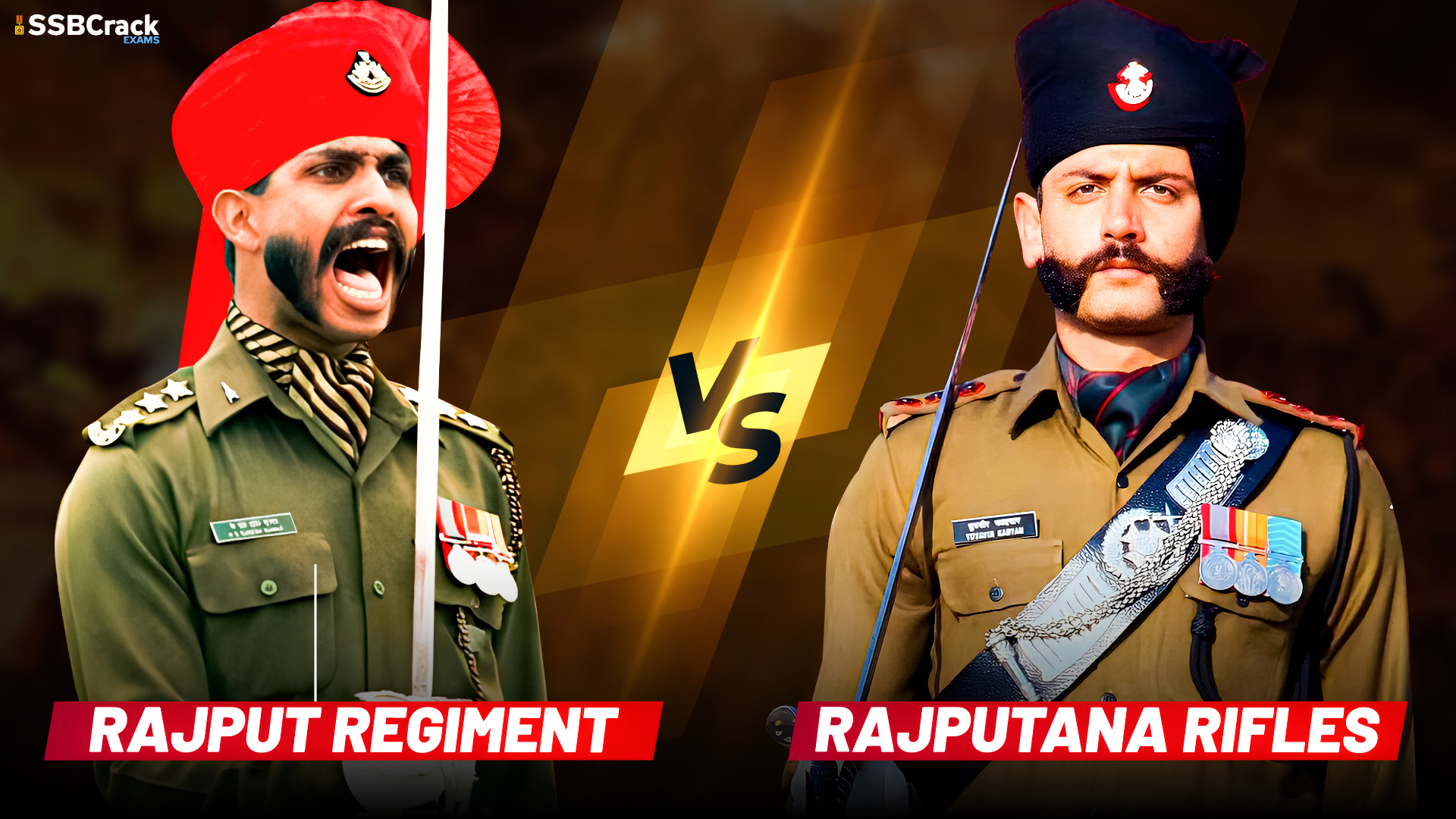
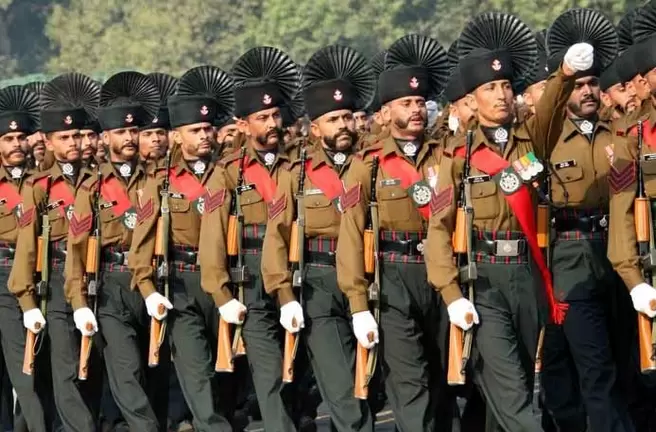

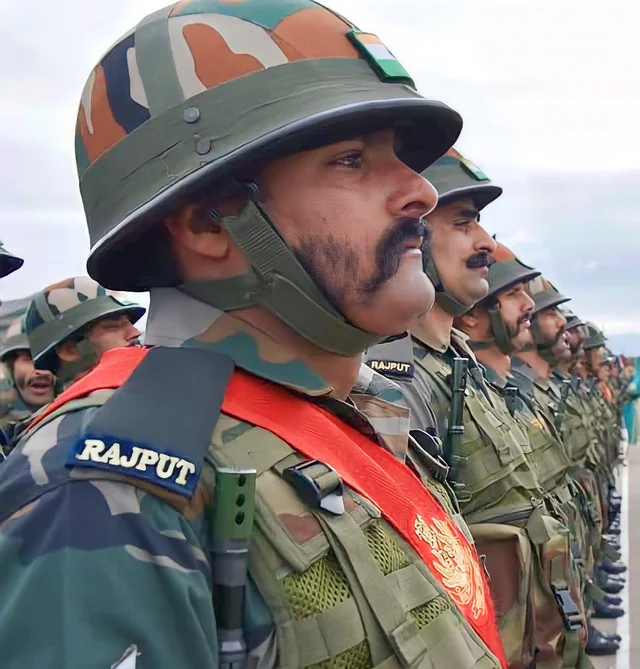

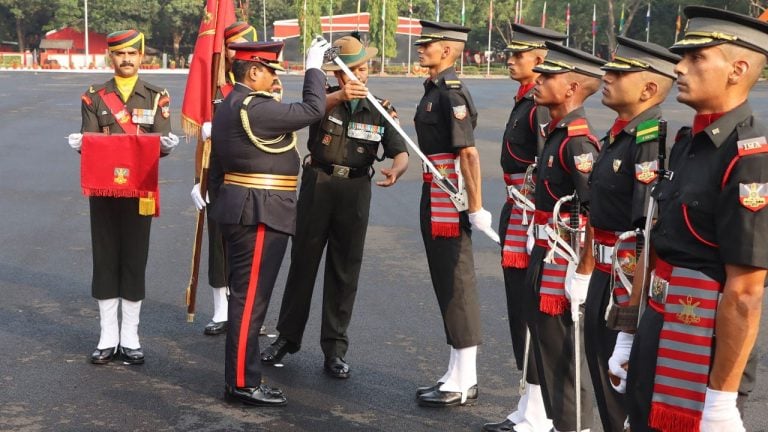
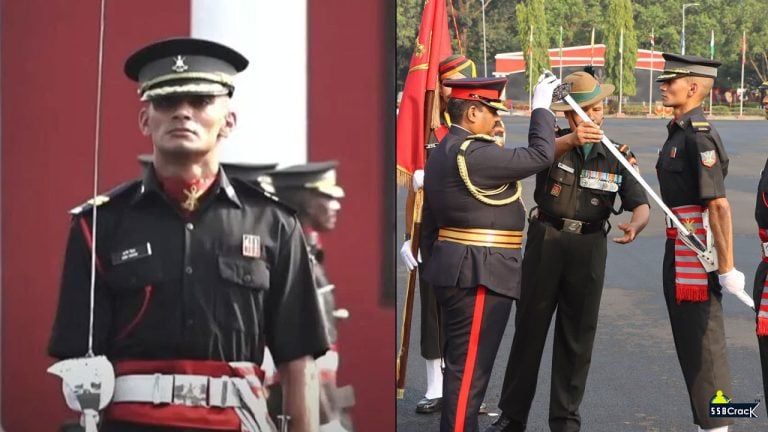
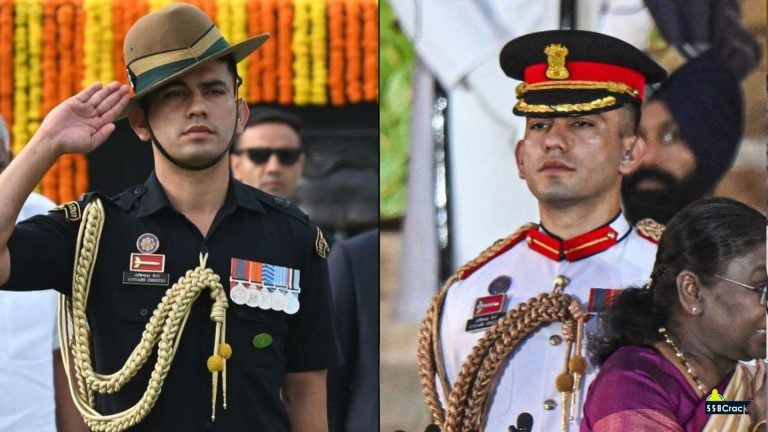
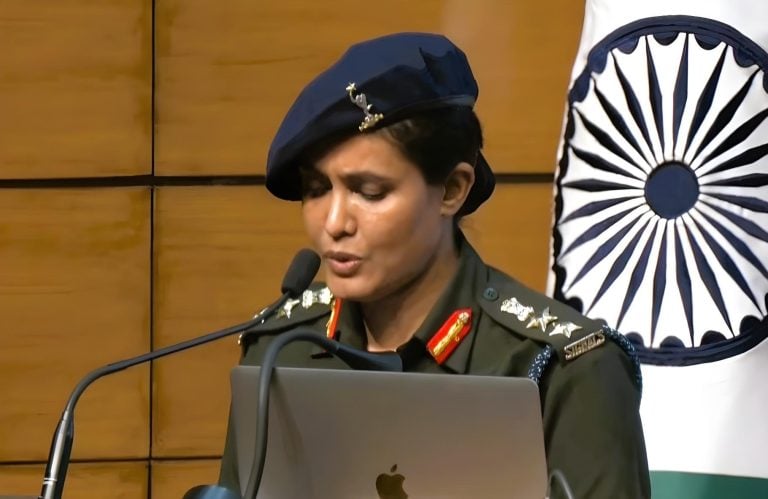
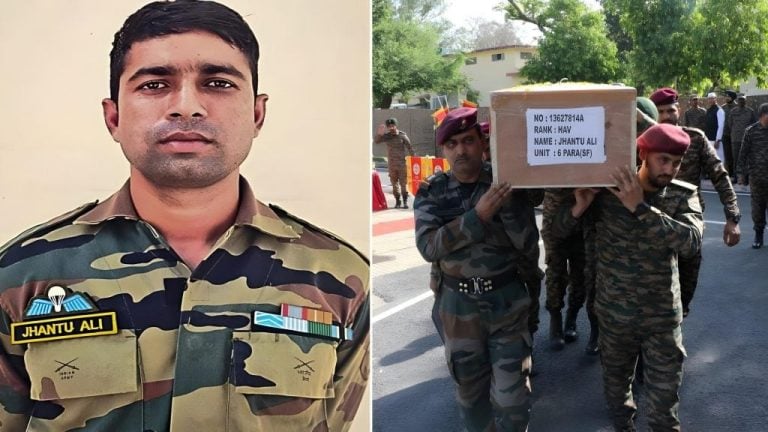
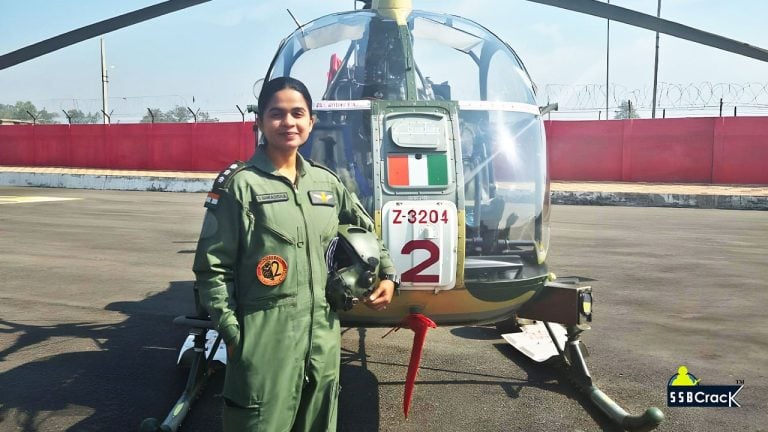

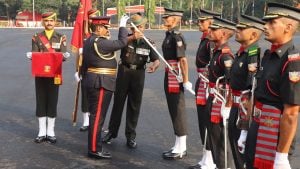
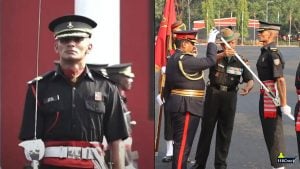
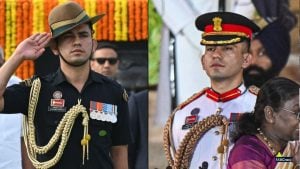



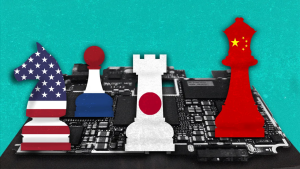

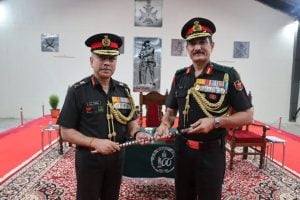

2 thoughts on “Rajputana Rifles and Rajput Regiment – What is the Difference?”
‘VEER BHOGYA VASUNDRA’ doesn’t mean “Brave enjoy the earth” it’s more correct translation is “Only the Brave shall Inherit the Earth”
Also majority of people in Rajputana Rifles are Rajputs, Stop trying to put your woke Diversity nonsense, contaminating the tradition with Jat, Gujar and Ahir nonsense
How can the Rajputana Rifles be the oldest with 1775 as their raising, when there are at least two regiments who trace their history to 1761 (Punjab Regt) and 1725 (Madras Regt)?
The black accruments worn by the RajRif is not unique to the regiment. The seven Gurkha Rifles regiments (not battalions, mind you), Garhwal Rifles, Jammu and Kashmir Rifles, Jammu and Kashmir Light Infantry also wear black insignia on rifle green tunics, in short, all rifle regiments do so as their original role in war was camouflage and concealment.
The service uniforms of the entire army is standard olive greens, only the accruments, rank and distinct regtl insignia differ from regt to regt, arm to arm, corps to corps, and in certain cases, also their ceremonial tunics and trousers.
Kindly get your facts correct and stop misleading the public with half baked information.